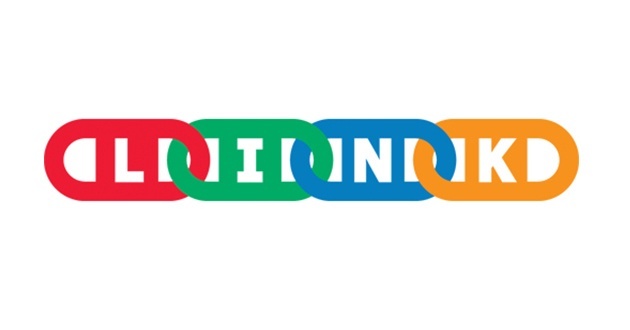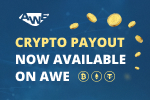Complete link building guide for adult websites

Complete link building guide for adult websites
Backlinks are important for SEO. They always have been and still continue to be so. But the type of backlinks that give your rankings a boost have changed dramatically.
Until a few years ago, people used different techniques to get more and better backlinks, like link exchanges, directory links, posts on article directories, links in forum comments, paid links, etc. You basically wanted as many links as possible, preferably from pages with a high PageRank, regardless the relevance. All of those old link building techniques are no longer allowed by Google and might get you a penalty for a bad backlink profile.
Modern link building requires an entirely different approach. Actually, Google says you shouldn’t even focus on link building, but focus on creating quality content instead. Then the links should come automatically. The truth is that having good quality and relevant backlinks is still very important, but it does demand caution to what type of links you get and where you get them from.
The question arises: what is a safe way to build links? Unfortunately, the answer is not that straightforward but a rule of thumb is to be very careful with the number and type of links you acquire. There is no guarantee that Google will not flag your links as unnatural.
There’s not much difference between link building for mainstream sites and link building for adult sites. The principles are the same. However, as the world of adult sites is very affiliate driven with the purpose of making money, there is a large number sites with poor quality, duplicated content and of low to none authority. Those are the sites you want to stay far away from in your quest for backlinks; hence you need to do some analysis beforehand.
A last remark before we go to the actual tips is that it’s important to realize that building links is a time consuming activity. You need to do a lot of analysis, think creatively and at the end you don’t have any guarantee that your requests for links will be honored or give your rankings a boost. Mind you, this is still a better alternative than leaving things as they are, this being the other single option.
Link building tips
This post will provide our webmasters with some tips for building links that will help your organic traffic for a long period of time. The focus of these tips is to get links that appear completely natural. That means that the links have the same characteristics as the links that regular web users would embed in articles or share on social media.
1. Create good quality content
Surely you’ve heard this before, but quality and original content are still the most important assets to get links to your site. Good content will encourage people to link to it. Even if the content already exists, you can create additional value by combining and presenting it in a unique way. A few examples of content you can create or combine:
- high quality original photos
- smart combinations of photos into collections
- original articles about live cam experiences (for example, from users and models)
- informative infographics using data of the adult business
- reviews of sites, models, etc.
Remember that even if you have the best content in the world, you will still have to let people know it’s there. So make sure you share your content on several means of social media so potential readers can find it.
2. When building links, do it consistently
Natural links to a site are normally created continuously over time. This means that you should also work on getting new links frequently. It’s better to get some links per day or per few days than to get a lot of links within two days every month. Of course, there are situations where many links are naturally created in a short time, but that mostly happens when big events are taking place (such as the birth of a famous baby, sports or music events, disasters, etc.). That is not where the focus of link building lies.
We will focus on the natural, normal link building. A steady growth of the number, quality and relevance of backlinks is what will give you a long-term growth.
Keyword research for link building: steps
Doing a keywords research helps you focus on the most relevant opportunities of getting a link.
Create a list of keywords, which you would like your site to rank for (pick the 5 most important ones) and make sure they are a bit different. Use that list to check in Google what the top 10 sites are and put the URLs of them in an Excel file.

1. Getting data
For each of those URLs you will get some data from the MOZ Open Site Explorer (Compare Link Metrics). In order to learn how to conduct the competitive analysis, please also read our article about finding a niche where this is well explained.
In addition to the MOZ metrics, you also want to see what anchor texts (the text you read and click on) the links pointing to the page have. Because that will give you some suggestions about the text you can use for the links you want to place on other sites. To limit the amount of work, order your data on PA value (descending) and start with the pages with the highest PA for further analysis.
The easiest way to get that info is to use the MOZ OSE and then “Inbound Links”. Fill in the URL you have found in the top of the Google results and you’ll get a list of links pointing to that page. To get a better idea of the links to that site, instead of only to that page, change the ‘Target’ to the subdomain or root domain. Now click on “Request CSV” to create a downloadable Excel report for this search. Once the report is finished, it will show up in your list of reports. Now you can repeat the same steps for each of the sites in the Google top 10 for your target keywords.
Other great sites that may help you getting links to specific sites or URLs are Majestic SEO and ahrefs. Both are free to use with certain limitations differing per site. The full functionality requires a subscription.
2. Using data
Once you have collected the data, it’s time to use it. For this, we will mainly use Excel to manipulate the data.
What you want to do for each of the URLs you’ve found is to check what kind of site it is. Then mark each URL whether it’s an interesting and relevant URL for your business and realistic to get a link placed. Relevance is especially important for modern link building. For example:
- Review site: if it’s relevant for your site, you want your site reviewed as well.
- Forum: be careful with links in forum comments or signatures, since they’re considered very spammy.
- Blog: if an article is about your niche, then you want a link there.
- Directory listing: if relevant, only select a few (best) to get a link from. Don’t go for everyone.
One final thing to check is whether links are ‘follow’ or ‘nofollow’. You can recognize ‘nofollow’ links when you check the source code of a link and in the link tag (<a href=”…”>) there is the attribute rel=”nofollow”. If that’s the case, then you will not receive much link juice from that link. So, the best links to get are the links without a rel=“nofollow” attribute.
3. Finding contact information
Then, after you have qualified every URL in your Excel sheet(s), you have a list of sites to approach to get the link placed. The next step is to find the contact information for each of those sites, since you will have to reach out to the site owner or webmaster to request for the link.
The contact information we’re looking for is a valid email address and, preferably, the name of the contact person.
There are a few ways to find this contact information:
- Check if there’s a page that says “Contact”. Many sites have a page like this with only a contact form, but some also provide a bit more info than that, like an email address. The contact form might be the last resort, if no other contact info was found.
- Check if there’s an “About” page.
- Check if there is a “Terms and Conditions” page. Sometimes, you’ll find contact information on those pages.
- In case you haven’t managed to find anything on the site, you can try if the Whois info gives anything useful. Go to DomainTools.com and check the domain. Be careful not to use the provider contact information, since it’s not them who you would like to send an email to (as they’re not going to do anything with it).
It is of crucial importance to get the contact information of the right person, i.e. the user interested in the content of the site. Sometimes this is the site owner, sometimes the webmaster or someone else. If you see the author name for blog posts, for example, then that could be the person to target.
4. Creating the best email
Writing an email for link building outreach is not easy. Link building outreach (contacting website owners/webmasters) is about building relationships. Also, the best way to build a relationship is striking up a conversation, and not making a request out of the blue. When you’re building a relation, you’re also building trust. And a lack of trust is one of the biggest reasons why people delete or ignore emails.
There are several reasons why emails end up in the trash:
- People distrust emails from senders they don’t know. So they consider it spam.
- The email subject is not interesting and does not make the receiver curious.
- The email is not relevant for the receiver, or at least that’s what he thinks.
- The email has errors. Errors are the most destructive, as they immediately erase any trace of professionalism.
The first challenge to overcome is to have your email actually opened and read. This means that the sender email address should be trustworthy and you should have a catchy, encouraging subject line.
Examples of standard and uninteresting email subjects:
- “Link request for www.example.com”
- “Link to this great site about ebony cam sites: www.example.com”
A better way to increase the number of people who actually open the email is to make it more personal, or at least to avoid anything in the subject about your site or that you’re trying to get a link. So, if you know anything about the receiver, like a special niche he’s interested in, use that information in your message.
Examples of subject lines that might make the receiver curious:
- Niche: Fetish. Subject: “Leather and Rubber essential to Fetish?”
- Niche: Ebony. Subject: “Ebony women more into toys?”
These emails could start a conversation about the Fetish or Ebony niches, especially when you ask a question or the user’s opinion about something. Once you’re in a conversation you start building a relationship in which you can easier ask for a link to be placed.
5. Sending and follow up
After creating your emails it’s time to send them out. Make sure to register (in an Excel sheet or database) what, when and to whom you’ve sent the email. This way you can easily follow the status of your outreach and you also create a historical list your link building efforts.
Monitor the response you receive and update your link building registration file. In the case of emails you haven’t received any response to after one to two weeks (don’t wait longer), make sure to send a follow up email in which you refer to the previously sent email.
A follow up email gives the impression that the first email was not an automated email, but was actually sent by a real person. Therefore you could get a lot more responses for the follow up email.
Link building software
We know there are several software packages available that claim to do the hard work in link building for you. This might work in some cases, but in general you have to realize you risk being penalized by Google, either by algorithm or by manual penalty. Google continuously improves their algorithms to find link networks and to distinguish quality backlinks from bad backlinks. They’re far from perfect, but are definitely getting better at it and as a result we see many sites with a bad backlink profile drop significantly in the SERPs.
Google is fiercely against any link building strategy that’s only implemented to try to manipulate Google’s rankings. This includes purchasing links, creating link networks and more.
Since not all solutions use the same principle, we’ll briefly explain some of the different approaches those services take and discuss the risks for each one.
1. Reciprocal link exchange
This is simply an agreement between two webmasters to place a link on the site to each other. Often these links were even sitewide links, like in the sidebar or footer. The good webmasters would still look at sites that were relevant to your own site’s content, but many would not care. This approach does not give you much success anymore, since it’s fairly easy to recognize by search engines. Best advice concerning solutions using this technique is to stay for away from them.
Example products:
- http://linkmachine.net/ (discontinued)
- http://www.reciprocalmanager.com/ (discontinued/ taken over?)
There solutions provide a more advanced link exchange concept. With those packages you offer link space on your site for links to other sites and you get a link from some of the other sites registered in the program. Eventually, it’s some kind of link network. This might work well, but the downside is that you don’t get links of high relevance.
Example products:
- http://www.onewayadultlinks.com
- http://Voltrank.com (does not support adult)

2. Blog comments and forum postings
Comments in blogs, guest books and forum discussion threads are popular link building strategies. In many forums you can add a link in the actual comment as well as place a link in the signature. Although more and more of those links are “nofollow”, many still aren’t. As Google has found out, very often comments are just irrelevant spam messages with one or more links in them. Adding these types of backlinks in high numbers is not only damaging for the site you place the links (they may not even be aware of this), it’s very likely going to hurt your own site’s ranking as this is typical link spam behavior.
Example products:
3. Article marketing / spinning
Article marketing is creating one article (often of low quality) and submitting them in many article sites. These articles always contain a few ‘money’ keyword links. These articles create a lot of duplicate content on those sites and also many very rich anchor text backlinks. Article marketing is quite easy for Google to find and will lead to a manual penalty.
Article spinning means that an article is divided in several text parts (lines, paragraphs) and synonyms which will be randomly mixed to create various ‘unique’ versions of the same article. Of course those articles are mostly of very low quality, but it makes content production much easier.
Most of the article marketing sites have been severely penalized by Google. If you still consider using these techniques, though, be cautious and do your homework on this topic before embarking on something that would most likely end up in an inevitable penalty.
Example products:
4. Directory submitting
Back in the days, in the pre-Google era, the different Internet directories provided a service because they helped you finding websites about all kinds of subjects. Those directories had thousands of links organized by categories and subcategories.
Nowadays, directories can still help people occasionally, but most of the directories have turned into large containers of irrelevant, spammy links.
As Google has already discovered the directories, links from those specific directories are not going to help your ranking. Mass directory submission, where software adds a link to your site in hundreds of directories, is giving a very bad link profile, very quickly. That probably will also make your rankings suffer.
Example products:
Disclaimer: We are not affiliated with any of the products mentioned in this article. We have explored these opportunities because many of our webmasters have expressed their interest in learning more about them.






